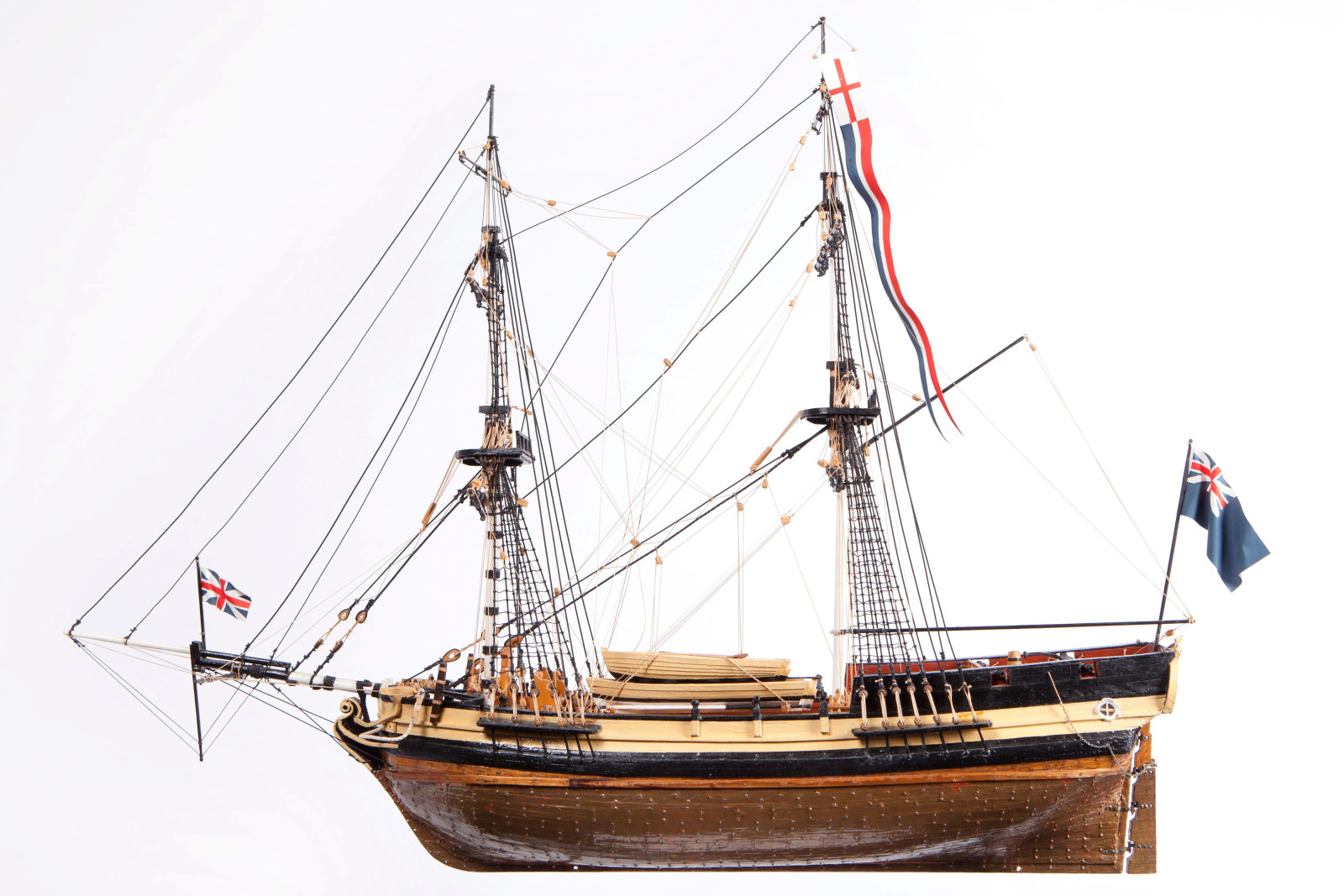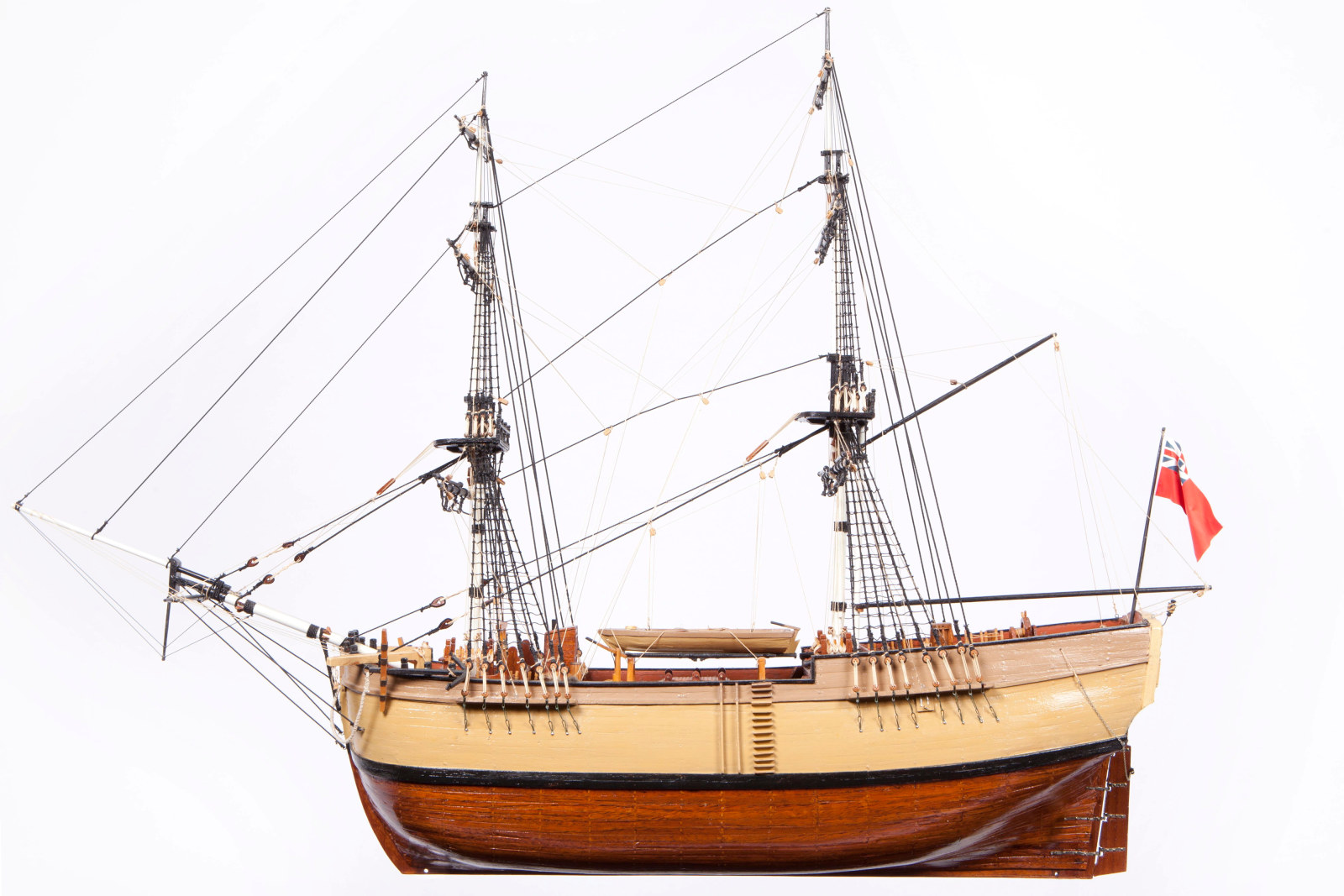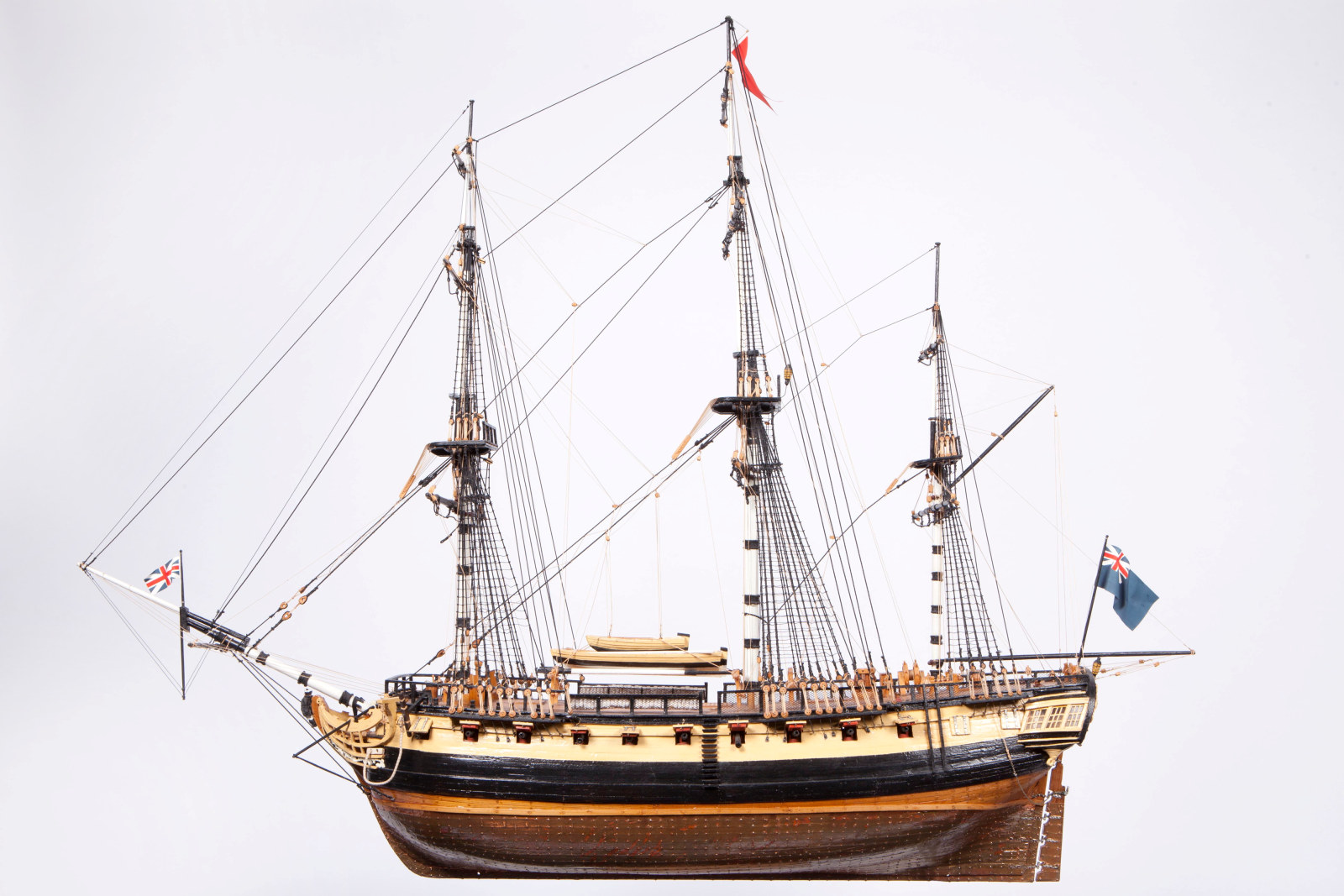Charlotte
Ship size length: 32 metres (105 feet); width: 8.5 metres (28 feet); weight: 343 tonnes (338 tons)
Charlotte
Convict transport
On 5 August 1787, while Charlotte was anchored at Rio de Janeiro, it was discovered that a coin counterfeiting ‘business’ had been going on below its decks. Convict Thomas Barrett, assisted by two other convicts, had been ‘with great ingenuity’ manufacturing quarter dollars out of ‘old buckles [and] buttons belonging to the marines, and pewter spoons’, according to Surgeon General John White’s account (published 1790).
White rated their skill highly, and believed that if only the men had better metal to work with, the coins ‘would have passed undetected’. Despite an extensive search, their coining equipment could not be found and White was at a loss to understand how they managed to work undiscovered, since ‘a centinel was constantly placed over their hatchway’ and ‘hardly ten minutes ever elapsed, without an officer of some degree … going down among them’.
More
Browse all
Alexander
Length: 34.75 metres (114 feet); width: 9.5 metres (31 feet); weight: 460 tonnes (452 tons)

First Fleet Ships
Borrowdale
Length: 22.7 metres (75 feet); width 6.7 metres (22 feet); weight: 276 tonnes (272 tons)

First Fleet Ships
Fishburn
Length: 31.4 metres (103 feet); width: 8.8 metres (29 feet wide); weight: 384 tonnes (378 tons)
Published on